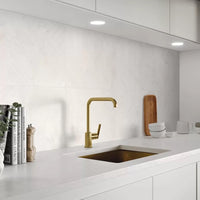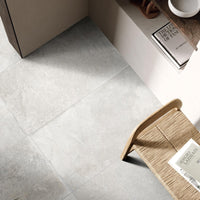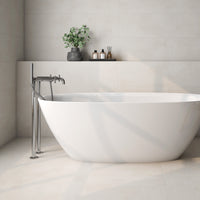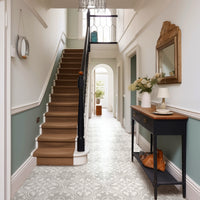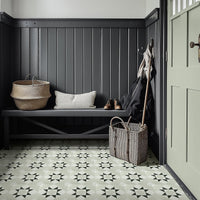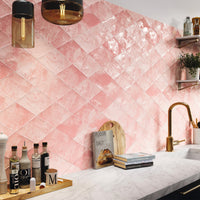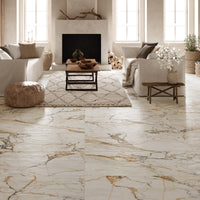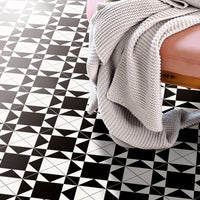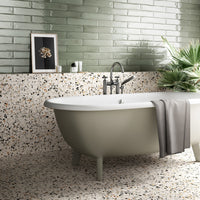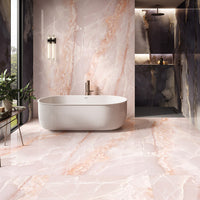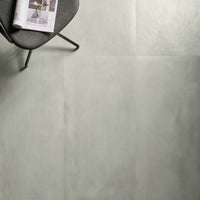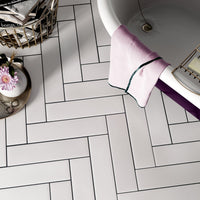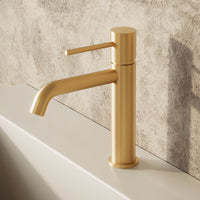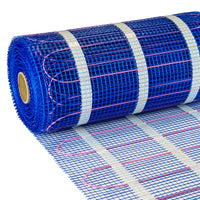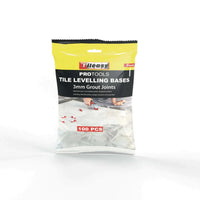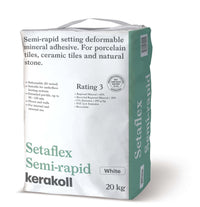The most important room at home? We can all agree it’s probably the kitchen, hands down. It’s the space where we cook and chat with family, meet and greet with friends and, put simply, slow down and enjoy life.
But creating your dream kitchen can be tricky. After all, it’s a room that plays different roles at different times of the day. That’s why wood effect tiles and kitchens are a recipe for success - not only do they look great, they’re family friendly and easy to live with too. In this guide, we’ll look at ways you can use wood tiles with popular kitchen styles, giving you plenty of inspiration for your next renovation project.
The Glossy White Kitchen

Many of us live in older properties that have been converted into flats and apartments. These types of buildings lend themselves well to modern kitchens; glossy white units and sleek islands always juxtapose well with high ceilings and intricate coving and framing around windows.
We find that pale oak and maple effect designs are a great complement to these types of kitchens. They’ll provide a warm contrast to the units themselves and will also compliment designer furniture and chairs. For added detail, we recommend laying planks in a herringbone pattern, to add detail to your space, without detracting from the overall modern aesthetic.
The Handmade Kitchen

Who doesn’t love a traditional handmade kitchen? There’s just something about a bespoke design that makes us go weak at the knees, whether it’s the made-to-measure cupboards, the beautifully-painted doors or the range cooker that can cook for ten.
And naturally, a hand-crafted kitchen comes with a price tag to match its starry appeal. So it goes without saying that the choice of flooring should be just as impressive; inferior materials just won’t cut it. That’s where parquet-style tiles such as Mansion Parquet come in. Large and luxurious, their timeless good looks offer a high-end foundation for high-end furniture. Plus, these porcelain tiles are incredibly easy to clean and maintain, so your dream kitchen will remain picture-perfect for many years to come.
The Shaker Kitchen

When it comes to the UK’s most popular kitchen style, it’s a safe bet that Shaker will be near the top of the list. It’s easy to see why - Shaker cabinets have a simple beauty that transcends trends, making them suitable both for period cottages and modern city homes alike.
And while natural stone was once the flooring of choice for a Shaker kitchen, wood effect tiles are quickly taking over. They work well with this classic style, adding natural warmth and character that compliments the timeless kitchen aesthetic.
The key to nailing the look is to choose wood tiles that are neither too clean and contemporary nor too rustic - a tile like Ascot Oak fits the bill, perfectly. The subtle grains and colour variation between planks adds depth to the room, complimenting not just the kitchen cabinets themselves, but also, in this case, the pared-back hexagon splashback tiles.
The Dark Blend Kitchen

Walnut coloured tiles? They’re a beautiful choice for any room - but especially so, if that room is a dramatic kitchen finished in darker tones. For example, the walnut plank tiles in this kitchen set the tone perfectly; their deep rich colouring sets the tone for a moody yet luxurious space that you’ll just want to linger in.
Compared to some homes, this kitchen might be on the smaller side. However, the designers have worked with the room, rather than against it. The choice of materials, from the flooring to the marble worktop, help create a space that feels cosy and inviting. It’s the kind of room that’s made as much for lazy weekends - sipping coffee with the Sunday papers - as it is for entertaining. You can achieve a similar look at home with our Jasper Walnut wood tiles.
The Scandi Kitchen

Who doesn’t love a healthy dose of Scandi design at home? The Nordic look is all about functional design, calm colouring and considered materials - exactly what’s required for the heart of a busy family home, in other words.
And as any self-respecting Scandinavian will tell you, there’s only one choice of flooring for these kinds of interiors - wood. And we’ll include wood effect tiles here, as they’re virtually indistinguishable from natural timber these days. The key to getting the look right is to choose a wood tile that isn’t too busy - heavy variations and graining can detract from the minimalist aesthetic. Instead, pick a plank with warm undertones and gentle movement, such as Aspen Honey. Lay in the classic staggered fashion and you’ll quickly have a home that’s full of hygge.
The Old Meets New Kitchen

Modern kitchens tend to be all about the clean and contemporary. Sleek units with handleless drawers, modern worktops and tiled floors in considered shades of grey. It’s a style that certainly looks the part, but can sometimes feel a little too clinical.
But there’s a different way to play with this modern style - distressed timber floors. It’s a classic take on the ‘old-meets-new’ aesthetic and, done right, will add soul and character that could otherwise be missing to a space. If you’re renovating an older property you may be in luck; authentic floorboards may be hiding under your current floor, waiting to be stripped back and varnished. However, a better way is to re-tile your floor with vintage wood-effect tiles. You’ll be able to choose a design that strikes the perfect balance between modern and rustic - our Bowdon Dark planks fit the bill. And as a bonus, these porcelain tiles can be laid on top of underfloor heating, so you can ensure your kitchen retains that streamlined look.
The Contemporary Kitchen

While we’re on the subject of grey, it’s fair to say that grey kitchens have been one of the hottest trends in recent years - especially when it comes to contemporary homes. Cabinets in a lighter tone - as shown above - make the space feel bigger and brighter. Paired with grey-veined marble and muted walls, they’re a great example of how to use this neutral in a scheme that’s cooler in tone but no less inviting.
And the floor plays a huge part in tying the whole scheme together. The different greyscale tones in the chevron tiles pick out the varying hues found in the room, from the pale paint to the darker brassware and industrial fridge. It’s a reminder that wood effect tiles don’t have to come in shades of oak - and that they’ll work in pretty much any interior.
The Open Plan Kitchen

And this brings us nicely onto chevron tiles. You can take an existing kitchen to the next level - without replacing the kitchen itself - by upgrading your flooring to either herringbone or chevron wood tiles. They’ll immediately add oodles of charm and character, without the huge cost that comes with natural parquet flooring.
As you might expect, many chevron tiles fall on the smaller side, so are well-suited to homes where the kitchen is tight on space. However, in our opinion they’re also a fantastic choice for open kitchens and extensions, instead of a larger floor tile. The grout lines form a geometric pattern that’s pleasing to the eye while there’s usually plenty of natural variation between the tiles, which work wonders over a larger floor area. As you can see in this stunning open-plan home above, the flooring offers a stand-out style in its own right, which not detracting from the marble-clad kitchen island, which remains the star of the show.
The Second-Glance Kitchen

One of the things we love about wood tiles is how versatile they are. You’ll find them laid on just about any surface, from bathroom and kitchen floors, to outdoor patios and even walls. And while we’re all used to seeing painted timber slat walls in hallways and the like, we’re not really used to seeing wood tiles laid on splashbacks.
So if you’re looking to create a kitchen that makes a great impression - without going down the maximalist route - why not tile your splashback with smaller wood effect tiles? You can easily achieve a look that’s similar to the kitchen above by laying our Herringbone Brown planks in a - you guessed it - herringbone pattern.
It’s a brilliant way to give an existing kitchen a lift, without having to overhaul your entire space. By their nature, wood tiles tend to tone in well with a variety of worktops and cabinets and they’ll add detail, without overwhelming the room. Take it from us, your friends and guests will take an admiring second glance at your new walls - it’s unexpected, understated and pretty unique.
